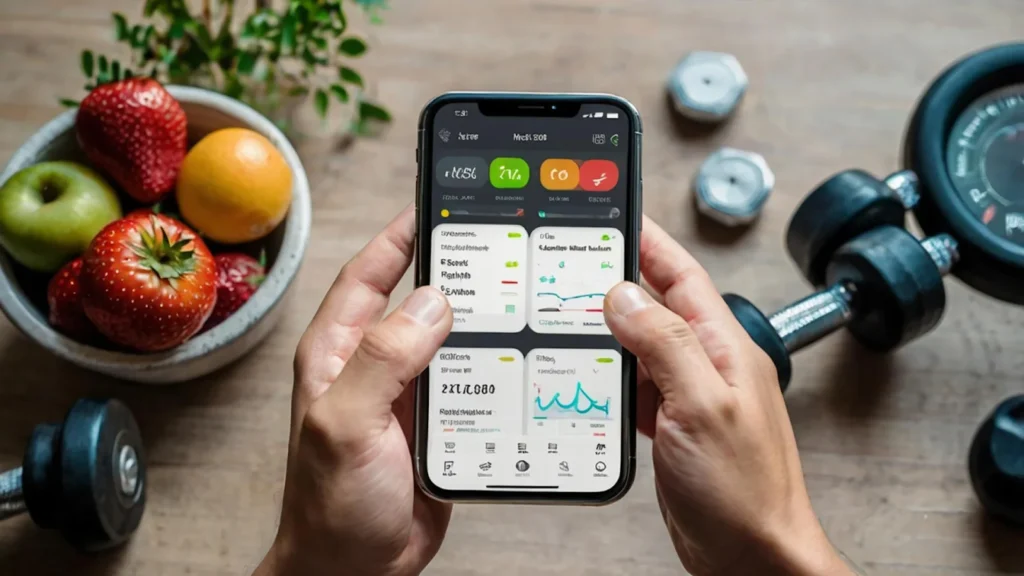In today’s digitally driven UK lifestyle, fitness and nutrition apps like MyFitnessPal are empowering people to live healthier, smarter, and more informed lives. From tracking meals to setting workout goals, these apps have become a daily wellness companion for millions.
If you’re planning to launch a fitness app in the UK, this guide breaks down the development journey—from concept to App Store launch—with practical, UK-relevant steps.
Why MyFitnessPal is a Favourite Among UK Fitness Users
MyFitnessPal has stood the test of time not just because it counts calories, but because it simplifies health tracking in one smart dashboard:
- Vast UK food database: Easily log meals by searching or scanning a barcode (think Tesco, Asda, Sainsbury’s items).
- Smart integrations: Syncs effortlessly with Apple Watch, Fitbit, Garmin, and other wearables.
- Multi-goal support: Whether you’re aiming for weight loss, strength training, or general fitness, the app personalises the experience.
- Real-time tracking: Daily progress, nutrient breakdowns, and lifestyle habit trends—users love seeing instant feedback.
Why Launching a Fitness App in the UK is a Timely Business Opportunity
The UK is experiencing a massive shift in wellness habits, and digital health is leading the charge:
- Over 60% of UK adults now use a fitness or wellness app regularly.
- UK’s fitness app market is expected to grow past £900 million by 2030.
- Home workouts, sedentary jobs, and mental health awareness are fuelling mobile health adoption.
This isn’t a short-term trend—it’s the future of fitness in the UK.
How to Build a Fitness App That Delivers Results
Here’s a simplified breakdown to create a successful fitness app for the UK market:
1. Research the UK Fitness Landscape
Analyse popular UK fitness apps like Freeletics, Runna, Fiit, and MyFitnessPal. Use review platforms (like Trustpilot or Google Play reviews) to uncover user pain points. This research will help define what your app must include—and improve upon.
2. Define a Clear Goal
Your app could focus on:
- Calorie and macro tracking
- Home workouts and routines
- Live or AI-powered coaching
- Meal planning with UK grocery data
Start with one area, perfect it, and expand gradually.
3. Decide on Platforms (iOS, Android, or Both)
To reach the largest user base in the UK, launch your app on both Android and iOS. Using Flutter or React Native can save time and development costs by using a single codebase for both.
4. Build a UK-focused development Team
You’ll need:
- A Project Manager to coordinate timelines
- UI/UX Designers to craft a clean, British-friendly user experience
- Frontend & Backend Developers
- QA Testers to ensure it works across UK devices and screen sizes
Working with a company experienced in UK fitness app development—like Equitysoft Technologies—can fast-track the process.
5. Choose a Reliable Tech Stack
- Frontend: Flutter or React Native
- Backend: Node.js
- Database: Firebase or PostgreSQL
- Integrations: Apple HealthKit, Google Fit, UK-focused barcode scanners (e.g. Tesco, Co-op)
6. Prioritise Simplicity in Design
The average UK user expects speed and simplicity. Ensure:
- Food/exercise logging takes less than 30 seconds
- Visual progress charts are easy to read
- The UI feels intuitive across age groups
7. Build Essential Features First
Start with core features your users will need on day one:
- ✅ Easy sign-up (social or email)
- ✅ Daily calorie and macro tracking
- ✅ UK barcode scanner
- ✅ Workout tracker & activity logs
- ✅ Step, water, and weight tracking
- ✅ Custom goal setting
- ✅ Wearable integrations
- ✅ Motivational reminders
Add-ons like AI coaching, live sessions, and community groups can be added as your app grows.
8. Test Across UK Devices & Networks
Ensure compatibility with:
- Different iPhone and Android models
- 4G/5G and Wi-Fi speeds
- UK location services and health app integrations
Launch only when performance is consistent across devices.
9. Launch, Market, and Keep Improving
Once live on Google Play UK and the Apple App Store, promote with:
- ASO (App Store Optimisation) using keywords like “fitness app UK” or “UK calorie counter”
- Social media campaigns targeting UK fitness groups
- User feedback collection for feature updates
| 👤 User Features | 🧑💼 Admin Panel |
|---|---|
| Social/email login | User/content management |
| UK barcode scanning | Analytics & reporting |
| Meal logging & tracking | Push notification control |
| Workout logs | Payment/subscription management |
| Custom fitness goals | Blog & content posting |
| Water, weight, step tracking | In-app support tools |
| Progress dashboard | Moderation features |
| Smartwatch integration | Plan/tier controls |
Development Cost Breakdown
| App Type | Features Included | Estimated Cost (€) |
|---|---|---|
| MVP (Minimum Viable Product) | Basic features like meal logging, workout tracking, and goal setting | €55 – €165 |
| Full Functional App | Advanced features: AI suggestions, wearable sync, community, subscriptions | €165 – €440 |
| Monthly Maintenance | Updates, bug fixes, server monitoring, minor enhancements | €16.50 – €33 / month |
Why a Fitness App is a Smart Business Move in the UK
- Recurring revenue from subscriptions, coaching, and e-commerce
- Highly scalable: Start simple and grow your user base and features
- Brand credibility: A well-made app boosts your reputation in the UK wellness space
- Market growth: The UK has seen a 20% increase in fitness app downloads year-on-year
Apps like MyFitnessPal built loyal communities by offering daily value—you can do the same with the right plan and team.
Conclusion: Is It Worth Building a Fitness App in the UK?
Absolutely. Whether it’s counting macros, managing home workouts, or syncing with wearables, UK users are hungry for smarter health solutions.
If you’re serious about launching a fitness app that connects, converts, and retains, our team at Equitysoft Technologies is ready to help you design, build, and scale your dream project—from strategy to launch and beyond.




